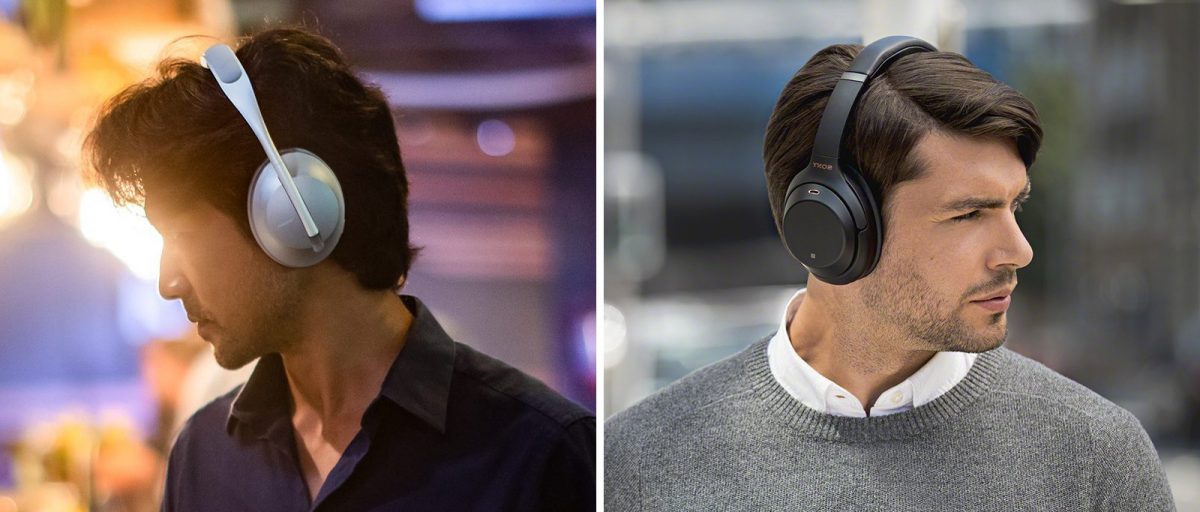Noise cancelling headphones are the future. They are simply put, the best money you will ever spend. For starters, they will save your hearing. I’m sure you’ve had this experience; you’re trying to listen to your new favourite track and felt frustrated because you weren’t able to hear it as well as you’d like. What comes next?
You crank up the volume as high as it will go. Now, you should realize that turning up the volume blasting right into your eardrums is damaging to your hearing. Over time, it can cause permanent hearing loss. Besides that, with cheap headphones instead of the noise cancelling headphones, simply increasing the volume is not going to improve the quality of the sound because the background noise will still be there.
If I’m honest, where I find I use my noise cancelling headphones is while driving and listening to sat nav instructions. Often I simply cannot hear the instructions, however if I plug my satellite navigator into a pair of nose cancelling headphones, life becomes much easier and I can hear the instructions much better.
Ambient Noise
Noise cancelling headphones are ideal for those locations with a lot of ambient noise. Drastically reducing the sounds from airplanes, crowded offices, commuter trains and similar noisy locations can work wonders to save you from potential hearing loss, not to mention the frustration of being unable to hear whatever you’re trying to listen to. Basically, there are two broad categories of noise cancelling headphones:
1. Active
2. Passive
Active
As a general rule, active are the best noise cancelling headphones, especially for specific sources of loud sounds that produce frequencies at both extremes of the sound spectrum…low and high. The passive noise cancelling headphones—“in ear” and closed-backed headphones—can block out just as much noise from a pure decibel standpoint, but will let in those extreme frequencies. However, most active noise cancelling sets do combine a passive noise cancelling feature with the active feature, allowing them to do an excellent job at both.
Advantages:
- Block low frequency sounds very well such as airplane engine roar
- Can combine passive and active cancellation to block out over 70% of ambient noise
- Reduces airplane fatigue by limiting long term exposure to low frequency sounds
Disadvantages:
- Higher priced than Passive
- Separate battery for active cancellation
- Often lower sound quality
Active noise cancellation is separated from passive noise cancellation by virtue of requiring an additional power source—a battery—to reduce ambient noise. When the passive effects and active effects of actively cancelling headphones are combined, they have the potential to block over 70% of outside noise disturbance.
How it Works
Active noise cancelling headphones, have a microphone and special circuitry in addition to all the usual headphone circuitry. At a basic level the microphone on the headphone picks up the ambient noise around you and relays it to the special circuitry. The special circuitry interprets the sounds and mimics it in an inverse, or opposite, manner. The inverse sound it produces is then sent through the headphone speakers and cancels out the ambient noise around you. Voila! Just pure listening pleasure without the distraction and interference of ambient noise!
The concentration on the low frequency sound spectrum of active noise cancelling headphones has the unique benefit of reducing fatigue due to prolonged exposure to low frequency sound. This is a great benefit for frequent fliers!
In fact, a low frequency sound spectrum can literally make you sick. Many office workers get unusually fatigued, or even sick, at work and don’t know why. The culprit might be the fans in air-conditioning units vibrating at a low frequency.
Passive:
Let’s begin this section by saying that all headphones provide some level of noise isolation. The thing is, some do a better job of it than others. If you are looking to avoid the price tag on active noise cancelling headphones, then your best bet for the best noise cancelling headphones of the passive variety will probably be closed circumoral headphones with an over-the-ear fit.
Avoid open circumoral, earbud, and open supra-aural headphone designs as they have little to offer in the way of noise reduction. In my experience, I have found that many closed-back over-the-ear circumoral designs let in less noise than closed-back on-ear.
Advantages:
- Lower cost than active
- Better sound quality
Disadvantages:
- Don’t block out extreme low and high frequency sounds as well as active noise cancelling headphones
It’s important to note that they can let extreme frequencies in from each end of the spectrum. To get a good idea of which ones perform the best, check our best noise cancelling headphones reviews since the actual amount of noise blocked will vary from one pair to another. Also, it is not uncommon for manufacturers to overestimate the percentage of noise reduction.















